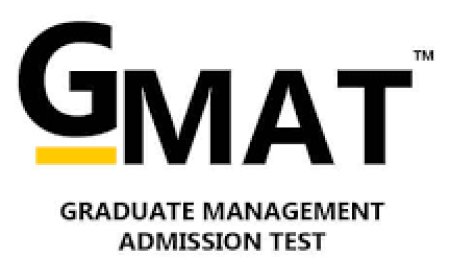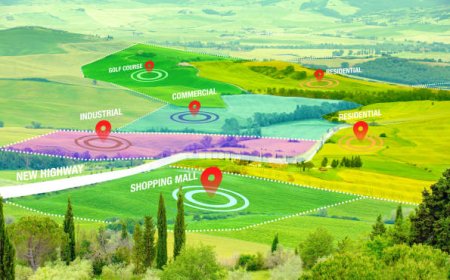Navigating the Gateway to India: Understanding Indian Visa Documents Required and Eligibility

India, a land of vibrant cultures, breathtaking landscapes, and ancient traditions, beckons travelers from across the globe.1 Whether for tourism, business, medical treatment, or study, securing an Indian visa is a crucial first step. The process can seem daunting, but by understanding the Indian Visa Documents Required and Indian Visa Eligibility, applicants can navigate the system efficiently and increase their chances of a successful outcome.
Indian Visa Eligibility: Who Can Apply?
The foundation of any visa application lies in Indian Visa Eligibility. This refers to the criteria an applicant must meet to even be considered for a visa. Eligibility is primarily determined by several factors, including:
-
Nationality: India has an extensive e-Visa program, allowing citizens of a vast number of countries to apply for their visa online for tourist, business, and medical purposes.2 However, not all nationalities are eligible for an e-Visa, and some may still need to apply for a traditional "sticker" visa through an Indian embassy or consulate in their home country.3 For instance, citizens whose parents or grandparents were born in Pakistan or ever held Pakistani nationality are generally not eligible for an e-Visa and must apply for a traditional visa.
-
Purpose of Visit: The reason for your trip is paramount. India offers various visa categories, each with specific eligibility criteria.4 Common categories include:
-
Tourist Visa: For leisure, sightseeing, or visiting friends and family.
-
Business Visa: For attending meetings, negotiations, or other business-related activities.5
-
Medical Visa: For individuals seeking medical treatment in India.6
-
Student Visa: For those enrolled in academic programs.7
-
Employment Visa: For individuals taking up employment in India.8
Each visa type has distinct requirements and permitted durations of stay. For example, tourist e-Visas typically allow stays of up to 90 days per visit, while business e-Visas may permit stays up to 180 days. -
Passport Validity: A fundamental requirement across almost all visa types is a passport valid for at least six months beyond your intended date of departure from India, with at least two blank pages for visa stamping.
-
No Adverse Travel History: Applicants with a history of overstaying previous visas, violating immigration laws, or having a criminal record in any country may find it challenging to obtain an Indian visa. Immigration authorities prioritize national security and adherence to regulations.9
-
Financial Means: Applicants must demonstrate sufficient financial resources to cover their expenses during their stay in India. This reassures authorities that the individual will not become a public charge.
-
Intention to Return: For most temporary visas (like tourist or business visas), applicants must convince the authorities of their genuine intention to return to their home country after their visit. Strong ties to their country of residence, such as stable employment, family responsibilities, or property ownership, can serve as proof.
It is crucial for applicants to accurately assess their Indian Visa Eligibility before proceeding with the application. Consulting the official Indian Visa Online website or the nearest Indian embassy/consulate is always recommended to confirm specific eligibility requirements based on your nationality and purpose of travel.
Indian Visa Documents Required: What You Need to Prepare
Once Indian Visa Eligibility is established, the next critical step is to gather the Indian Visa Documents Required. The specific documents vary depending on the visa type and the mode of application (e-Visa or traditional sticker visa). However, a general list of essential documents includes:
-
Valid Passport: As mentioned, your passport must meet the validity and blank page requirements. A scanned copy of the passport's bio page is typically required for e-Visa applications, while original passports are submitted for traditional visas.10
-
Passport-Sized Photograph: Recent, clear, color photographs with a white background, meeting specific dimensions (usually 2x2 inches or 35mm x 45mm), and showing a full frontal view of the face. For e-Visas, a digital upload of the photo is needed.
-
Completed Visa Application Form: This is the cornerstone of your application. For both e-Visas and traditional visas, an online application form must be filled out accurately and completely. Any errors or omissions can lead to rejection. For traditional visas, a printed and signed copy of the online form is usually required, often in two places.
-
Proof of Financial Means: Bank statements, salary slips, or other financial documents demonstrating sufficient funds to cover your stay.11
-
Travel Itinerary/Flight Tickets: While not always mandatory at the initial application stage for all visa types, a return or onward ticket is often required.12 A detailed travel itinerary can strengthen your application, especially for tourist visas.
-
Accommodation Details: Proof of hotel bookings or an invitation letter from a host in India, along with their address and contact details.13
-
Purpose-Specific Supporting Documents: This is where the requirements become highly specialized based on the visa category:
-
For Business Visas: An invitation letter from the Indian company, a business letter from your sending company, and potentially a copy of the Indian company's Letter of Incorporation.14
-
For Medical Visas: A medical treatment recommendation letter from a recognized Indian hospital and your medical documents.15
-
For Student Visas: Proof of admission to an Indian educational institution and evidence of financial support for tuition and living expenses.16
-
For Visiting Friends/Family: An invitation letter from your host in India, along with their address proof (e.g., utility bills) and a copy of their Indian ID.17
-
Proof of Address: A clear scan of a driver's license or a utility bill (gas, water, electric) in the applicant's name showing their current residential address.
-
Previous Passports and Visas (if applicable): Copies of past passports and any previous Indian visas.
-
Visa Fee: The applicable visa processing fee, which is typically non-refundable regardless of the outcome.18
It is paramount to ensure all Indian Visa Documents Required are authentic, clear, and accurately reflect the information provided in the application form. Discrepancies, forged documents, or incomplete submissions are common reasons for visa rejection.19
The Application Process and Avoiding Pitfalls
The application process generally involves filling out an online form, uploading digital copies of documents (for e-Visa) or submitting physical documents (for traditional visa) to the designated Indian mission or visa application center (like VFS Global), paying the fee, and potentially attending an interview.20 For e-Visas, the approval is typically sent via email, and the actual visa is stamped upon arrival.21 For traditional visas, applicants must await the processing and collect their passport.
Common reasons for visa rejection, beyond not meeting Indian Visa Eligibility or failing to provide all Indian Visa Documents Required, include:
-
Inaccurate or incomplete information on the application form.
-
Mismatched data across different documents.
-
Poor quality or non-compliant photographs.
-
Insufficient funds to support the trip.
-
Unclear purpose of travel.
-
Lack of strong ties to the home country.
-
Previous visa violations or criminal records.
By meticulously addressing all aspects of Indian Visa Eligibility and diligently compiling the Indian Visa Documents Required, prospective travelers can significantly streamline their application process and look forward to an enriching experience in India. It is always advisable to begin the visa application well in advance of your intended travel date to allow for processing time and any unforeseen circumstances



























